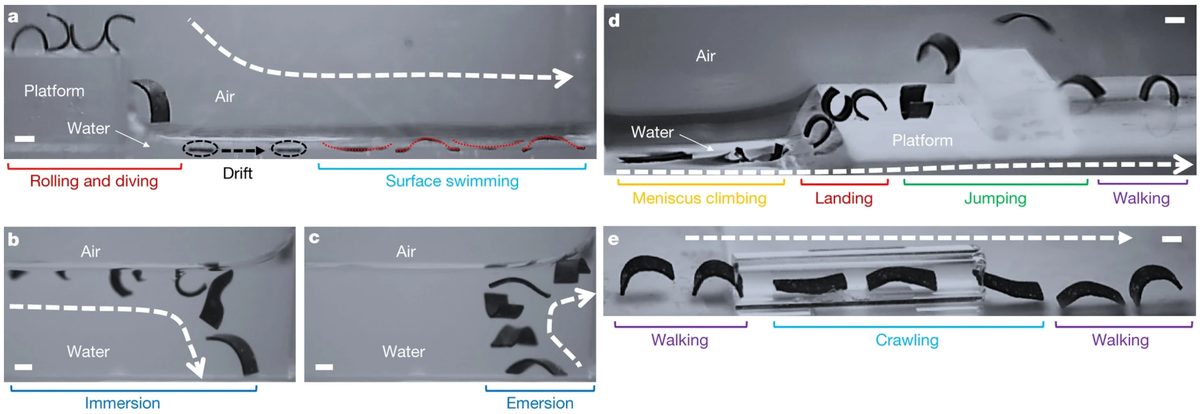Research Overview

The "Bioinspired Autonomous Miniature Robots" group focuses on developing autonomous miniature robots ranging from millimeters to centimeters. We specialize in fabricating high-precision, multifunctional actuators and exploring novel energy-autonomous designs to enable untethered operation. Inspired by small animal locomotion, we leverage simulation-driven approaches to optimize robotic motion and enhance performance. With target applications spanning biomedical devices, underwater exploration, and industrial automation, our goal is to create efficient, untethered robots capable of performing diverse tasks in complex environments.
The “Bioinspired Autonomous Miniature Robots” group is committed to advancing the frontier of autonomous small-scale soft robotics. Its research focuses on three key areas: miniature actuators, robot structure design, and diverse real-world applications. In the area of miniature actuators, the group develops high-performance multifunctional actuators using advanced smart materials. These actuators are designed to dynamically adapt to different tasks and environments, enabling complex robotic behaviors such as navigating uneven terrains and interacting with delicate structures, all while maintaining reliability and efficiency. Additionally, the group explores energy-autonomous actuation methods, aiming to power robots through environmental energy harvesting, which supports long-duration and long-range autonomous operations.
For robot design, the group combines bioinspired strategies with simulation-driven methodologies. Inspired by nature’s highly efficient and adaptable locomotion strategies, the team investigates innovative designs for soft robots capable of multimodal and adaptive movement. Simulation-driven design accelerates the development cycle by optimizing mechanical structures and motion patterns before physical fabrication, improving overall performance and functionality.
The group’s research has significant potential across multiple domains. In biomedical applications, miniature soft robots could enable breakthroughs in minimally invasive surgery, targeted drug delivery, and precise diagnostics. In underwater robotics, their flexibility and adaptability make them ideal for exploration, environmental monitoring, and inspection in hard-to-reach underwater environments. In industrial robotics, small-scale robots could be used for high-precision inspection, maintenance, and repair of complex machinery and equipment. By integrating expertise in mechanical engineering, material science, mechanics, and robotics, the group aims to create autonomous miniature robots capable of operating in complex and dynamic environments, driving advancements in medicine, industry, and beyond.